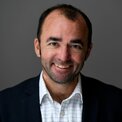Our new NorthStandard site is now live. There will be no new content or updates added to this site. For the latest information, please visit our new site north-standard.com.
Press article: Why P&I clubs are returning premiums to their members
News & Insights 12 March 2018
Nick Jelley, Chief Financial Officer, explains how clubs calculate the correct level of free reserves, in an article in Insurance Day.
At the February 20, 2018 renewal, all 13 members of the International Group of P&I Clubs set a general increase of 0% for the second year running. Equally unprecedented, more than half are giving money back to their shipowner members in the form of credit, cancelled calls or cash.
The renewal is timed for the unfreezing of Baltic ports, so is it just coincidence so many clubs are thawing their free reserves too?
The reality is since the first fire insurance mutuals appeared in the 17th century, mutual insurers have always been able to call upon their members when they need more cash – and, when they have enough, to hand some of it back.
Protection and indemnity (P&I) clubs are no exception. The only real difference is that the 13 members of the International Group mutually pool their losses. Despite strong inter-club competition, this has led to a common financial approach.
Clubs are also now subject to strict regulatory requirements, most notably the EU’s Solvency II Directive since January 2016. The Bermuda Monetary Authority, which governs some P&I clubs’ captive reinsurers, also achieved full Solvency II equivalence in March 2016. The effect has been a greater focus on risk and solvency.
In addition, S&P Global Ratings has emerged as the primary rating agency for the sector, with most clubs aiming to get and keep a top S&P “A” rating. The clubs’ once disparate approaches to capital management have therefore converged – such that several (rather than just one or two) now find they can return premiums.
Breakeven underwriting
Another important factor is that, since the global financial crisis, clubs no longer rely on investment returns to cover lack of premium income. In 2015/16, most clubs actually lost money on their invested capital. The loss of investment income has focused all clubs on achieving a breakeven underwriting result, meaning a combined ratio of 100%.
The result is greater attention being paid to risk modelling, claims analysis and loss prevention. Most clubs now have advanced stochastic models to provide a clearer picture of their risk exposure. Certainly this is paying off, with all but two clubs reporting combined ratios below 100% for the years ending February 2016 and February 2017 – albeit in a relatively benign claims environment.
A particular benefit of better risk modelling is it has enabled clubs to have a more sophisticated approach to determining how much capital they should keep as free reserves. Free reserves are essential to protect mutuals against shocks, cushioning members against paying unexpected extra premiums to cover unusually high claims or losses (in all but extreme cases).
Given the complex nature of P&I insurance, setting the right level of free reserves traditionally erred on the side of caution.
Until recently, clubs were often compared on the ratio of their free reserves to entered tonnage or premium income, neither of which are really valid indicators of solvency, given increasing diversification. Inevitably this led to more upward pressure on free reserves.
So how do clubs now calculate the correct level of surplus assets to hold as free reserves? I can only tell you how the Standard Club does it, but our approach is similar to that of other clubs.
As we set out in our recent capital management methodology bulletin, our guiding principles are to: minimise the risk of making extra calls; continue to benefit from our S&P “A” rating; comply with financial regulations; and ensure our free reserves are no higher than needed to meet these objectives.
Free reserves
In setting a minimum level for free reserves, we first model future financial risks – which after all are what the reserves are designed to protect our members against. In practice the biggest risks are large pool claims (both our own and those of other clubs) and equity investments.
Second, free reserves need to meet the minimum set by regulatory authorities in each of the jurisdictions we operate in. The level of free reserves required at our group level is the Bermuda solvency capital requirement (BSCR).
Third, we perform an “own risk and solvency assessment” (ORSA) using our model. This is a minimum free reserve calculation tailored to our own risk profile based on a one-in-200-year worst-case outcome.
Next we calculate the free reserves we need to achieve an S&P capital adequacy rating of AAA, which is virtually a prerequisite to achieving and keeping an S&P financial strength rating of A (the relatively small size and lack of diversity of clubs means this is generally the highest achievable).
Finally, we consider our board’s risk appetite. In this context we avoid risks that would lead to a more than one-in-10 chance that free reserves would fall below the ORSA level. As this is normally above the BSCR regulatory level, it sets a minimum for the free reserves.
Our board also wishes us to ensure there is a less than one-in-10 chance that the free reserves will fall below the S&P AAA capital adequacy level, which can be regarded as setting a maximum level for the free reserves. Any capital in excess of this is surplus and can be safely handed back to members.
Orginally posted on Insurance Day.

